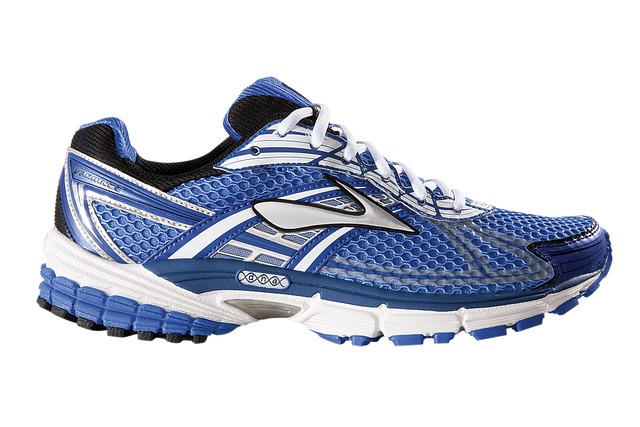When the winter air sharpens the edges of the city and the days grow shorter, the hum of screens can feel overwhelming. The promise of instant information, endless scrolling, and constant connectivity clashes with the quiet of a snow‑covered path. An offline winter run is more than a workout; it is a deliberate pause, a chance to re‑orient the mind and body toward the present moment and toward the people who share that moment. In this article we explore how stepping away from devices during a winter run can recalibrate our relationship with technology, deepen our human connections, and foster a mindful, healthier way of living.
The Allure of the Digital Landscape
Modern life is saturated with notifications, emails, and social media feeds that vie for our attention. Every sunrise, the average person receives dozens of messages from apps that remind us of work, friends, news, and advertisements. This constant digital bombardment creates a habit of multitasking and reduces our capacity to engage fully with the world around us.
- Information overload: The sheer volume of data can lead to decision fatigue.
- Social comparison: Online displays of curated lives foster feelings of inadequacy.
- Sleep disruption: Blue light exposure and mental stimulation can hinder restful sleep.
Yet technology is not inherently negative. It offers connectivity, access to knowledge, and tools that enhance productivity. The challenge lies in cultivating a balanced relationship that preserves the benefits while mitigating the drawbacks.
The Concept of an Offline Winter Run
An offline winter run is a structured, intentional activity where participants abandon their smartphones, tablets, and other electronic devices for the duration of the run. The focus is on the sensations of movement, the rhythm of breathing, and the natural surroundings. This practice draws from mindfulness traditions, which emphasize awareness of the present moment, and from the growing body of research that links digital detoxes to improved well‑being.
“When we let go of the need to stay connected, we open space for deeper connection with ourselves and others.”
By eliminating the external stimuli of screens, the mind is freed to observe its own thoughts and emotions, enabling a more authentic sense of self.
Physical and Psychological Benefits
Running, especially in winter, engages the cardiovascular system, strengthens the musculoskeletal framework, and elevates mood through the release of endorphins. When combined with a digital detox, these benefits are amplified.
- Enhanced focus: Without the lure of notifications, runners can concentrate on their stride, posture, and environment, leading to better technique and fewer injuries.
- Reduced stress: Mindful running lowers cortisol levels and increases parasympathetic activity, fostering calmness.
- Improved sleep: Exposure to natural light during daylight runs, coupled with decreased blue light exposure, aligns circadian rhythms.
- Greater self‑awareness: The absence of digital chatter encourages introspection, which can clarify personal goals and values.
Studies on brief digital disconnections indicate measurable reductions in anxiety, an increase in positive affect, and a heightened sense of belonging when participants later interact in person.
Bridging the Technology‑Human Divide
Technology often serves as a barrier rather than a bridge. People can appear connected on the surface, yet in face‑to‑face encounters, conversations can feel superficial or distracted. An offline winter run provides a space to test the hypothesis that reducing digital input increases the quality of human interaction.
Consider a simple scenario: a group of friends meet for a run, each leaving their phone in a locker. Throughout the activity, they exchange jokes, share personal anecdotes, and support each other’s progress. The absence of screen time removes the temptation to glance at a friend’s profile or to multitask during conversation. The result is a more genuine, present experience.
Planning Your First Offline Winter Run
Preparation is key to a successful and safe offline winter run. Here are practical steps to get started.
- Choose a safe route: Prefer familiar paths with adequate lighting and minimal traffic.
- Set a duration: For beginners, aim for 20–30 minutes. Advanced runners can extend to an hour or more.
- Pack essentials: Warm clothing, a headlamp or reflective gear, a water bottle, and a small first‑aid kit.
- Arrange a backup plan: In case of inclement weather or injury, have a plan for a shorter walk or a warm indoor activity.
- Communicate your plans: Let a friend or family member know your route and expected return time.
During the run, keep your focus on breath, stride, and the sensation of your feet striking the ground. If you feel the urge to check your phone, gently remind yourself of the purpose: to reconnect with your body and environment.
Integrating the Run into Daily Life
Once you have experienced the benefits, consider how to weave offline winter runs into your routine. Consistency amplifies the positive outcomes.
- Schedule recurring sessions: Set a weekly or bi‑weekly slot in your calendar.
- Invite others: Bring friends, family members, or coworkers. Shared experiences reinforce social bonds.
- Vary the terrain: Explore parks, trails, or urban streets to keep the activity engaging.
- Reflect afterward: Keep a brief journal entry noting how you felt before, during, and after the run.
- Gradually reduce digital habits: Pair the runs with a policy of limiting social media usage in other contexts.
By embedding these practices into daily life, the offline winter run becomes more than an occasional detour; it becomes a cornerstone of holistic well‑being.
Case Study: The City Run Collective
In a northern metropolitan area, a group called the City Run Collective organized monthly offline winter runs for residents of all ages. The initiative started with a single 30‑minute walk around the city park. Over time, the group expanded to include trail runs, cross‑country hikes, and community service projects.
Participants reported reduced screen time, increased empathy toward neighbors, and improved sleep patterns. The collective also organized “silent meet‑ups” where conversation was limited to eye contact and gestures, fostering a renewed sense of community trust.
The success of the City Run Collective demonstrates that when people voluntarily surrender digital devices, they can rekindle a shared humanity that is often lost in the hustle of modern life.
Potential Challenges and Mitigation Strategies
While the offline winter run offers many advantages, it can also pose challenges. Awareness and planning help mitigate these risks.
- Loneliness during isolation: Pair up with a friend or join a group to ensure companionship.
- Physical injury: Warm up adequately, wear proper footwear, and listen to your body’s limits.
- Cold exposure: Dress in layers, wear a hat, and avoid overexertion that can lead to hypothermia.
- Social isolation from digital communities: Balance offline runs with occasional virtual check‑ins to maintain broader connections.
By anticipating these pitfalls, participants can focus fully on the present moment rather than on mitigating discomfort.
Beyond Running: Extending the Digital Detox Philosophy
While the offline winter run is a powerful tool, the underlying principle—deliberate disengagement from technology—can be applied in other areas.
- Digital free zones: Designate spaces like the bedroom or dining area as tech‑free.
- Mindful media consumption: Schedule specific times for checking email or social media, rather than responding instantly.
- Scheduled reflection: Dedicate a weekly block to journaling or meditation without electronic aids.
- Nature immersion: Spend time outdoors, gardening, or simply walking without a phone.
- Community engagement: Volunteer or join local clubs where interaction is face‑to‑face.
Integrating these practices cultivates resilience against digital overload and strengthens our human connections across multiple dimensions.
Conclusion: A Call to Mindful Action
The winter months present a unique opportunity to slow down, reflect, and realign our relationship with technology. By embarking on an offline winter run, we make a conscious choice to prioritize the tangible world of breath, motion, and human presence over the intangible pull of screens. This practice not only revitalizes the body but also nurtures the soul, reminding us that connection is most profound when it happens face‑to‑face, heart‑to‑heart, and mind‑to‑mind. Let the snow, the crisp air, and the rhythm of your steps guide you toward a deeper, more authentic way of living—one step at a time.




